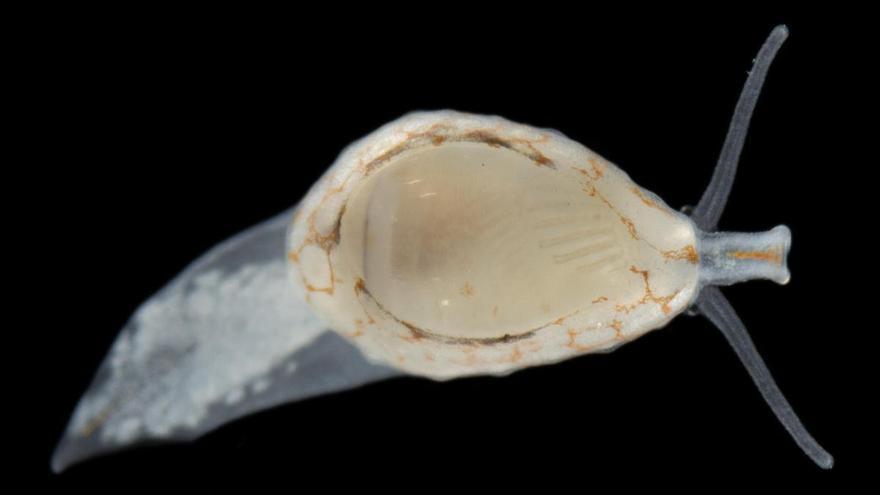
At 50 meters deep in a rhodolith bottom in the Scratch Tipin Tenerifedivers from the Finnish Scientific Diving Academy have collected seven live specimens of a new species of marine mollusk ‘Granulina’whose shell is wider than that of the rest of its congeners in the Canary archipelago.
The new species has been named ‘Granulina nekton’ in recognition of the Nekton Foundation, co-sponsor of the Macaronesia-Tenerife Submersible & Diver Expedition of the Ocean Census program, which took place between November 25 and December 17, 2023.
This is the second species described within the Ocean Census program, according to researcher Jesús Ortea, a retired professor of Zoology at the University of Oviedo who has collaborated in this scientific initiative that has a submersible, the Pisces VI, capable of collect samples at 200 meters depth with a mechanical arm.
On this occasion the specimens were obtained in the night lift from the rhodolith samples deposited in trays, which were collected in bags with a mesh size of 1 millimeter by the team of divers from the Finnish Academy of Scientific Diving.
The specimens were observed, photographed and filmed live before being anesthetized by cooling and fixed in absolute alcohol to be later deposited in the Museum of Nature and Archeology of Santa Cruz de Tenerife, says Jesús Ortea, who publishes this month, in the first issue of the year of the Avicennia Tropical Biodiversity Magazine, the description of this new species of marine mollusk in an article signed together with the marine biologist Leopoldo Moro.
In this regard, the Asturian researcher emphasizes that on this occasion fewer new species of mollusks have been collected than when he first arrived in Tenerife, 40 years ago, with such rudimentary means as “a bucket, a spatula, four jars and some of the old flip flops”.
These few results “are a good indicator that the inventory of Tenerife’s marine mollusks is approaching its end,” says Ortea, who in a previous work together with Moro and Herrera has made a historical compilation of publications related to the study of the species of the genus Granulina Jousseaume in the Canary Islands, from Granulina guancha to the palm tree and the rutae, among others.
But the shell of Granulina nekton, the new species, is wider than that of the rest of the coastal congeners of the Canary archipelago, such as the canariensis of Fuerteventurawhich it surpasses in dimensions (3 x 1.5 millimeters) in addition to being much narrower.
Furthermore, its coloration presents a “first order” differential character compared to the rest of the congeners of this mollusk in the archipelago, since the Granulina nekton has a uniform ivory white color on the inner mantle of its shell, without the orange or pink spots that characterize to other Canary species.
Also in 2023, these researchers discovered in Boavista (Cape Verde) a species of marine mollusk that gave rise to a new family and a new genus called Forjacella in homage to the masters of forging lattices, and which has the council of Taramundi as its epithet. in Asturias, where the last blacksmiths remain as a dying trade.















